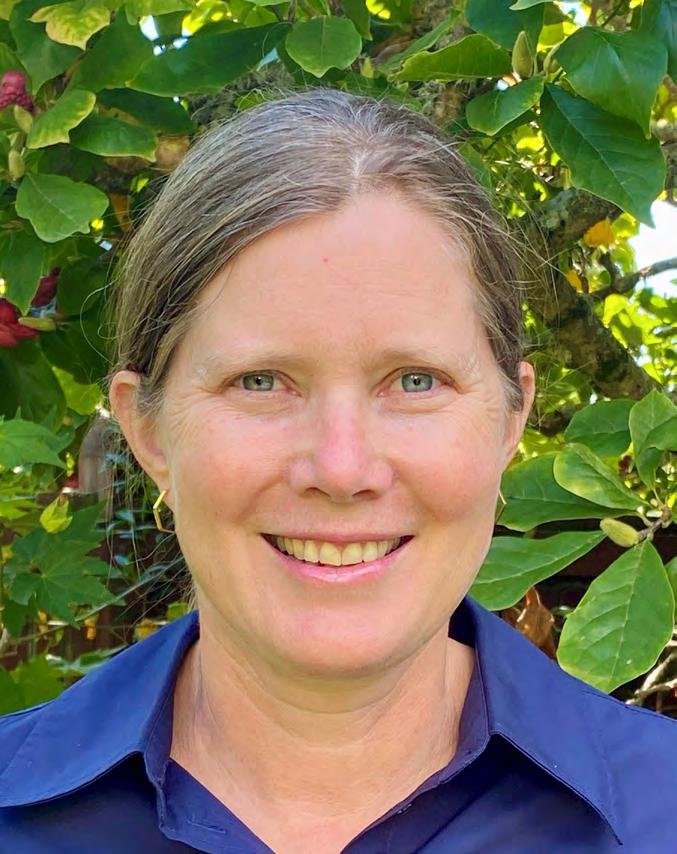
6 minute read
The Aotearoa New Zealand Rural Health Equity Strategy
The Aotearoa New Zealand Rural Health Equity Strategy is being tailored specifically to meet the country’s unique needs
Advertisement
Regional and rural communities in Australia and Aotearoa New Zealand face worse health outcomes because of where they live. It’s a well-known fact that healthy communities are more cohesive and more productive. It’s also a fact that the more rural a community is, the less access they have to critical services such as trauma care, elective surgery, and general health care. The Royal Australasian College of Surgeons (RACS) established the Rural Health Equity Steering Committee (RHESC) to address the inequity of surgical services experienced by people living outside metropolitan areas. The RHESC will, in consultation with a wide range of Fellows and specialist societies, developed the Rural Health Equity Strategy. It’s a collaborative, itemised plan to work towards equal access to surgical care for all Australians and Aotearoa New Zealanders, regardless of where they live. The two countries face different regional and rural challenges but, fundamentally, these communities have the same set of problems with access to timely surgical care. The Aotearoa New Zealand Rural Health Equity Strategy is being tailored specifically to meet the country’s unique needs and will be officially launched in April. Dr Nicola Hill is an otolaryngology surgeon based in Nelson, a regional town of about 56,000 people, in the South Island. She’s a RACS Councillor, and the immediate past chair of the Aotearoa New Zealand National Committee (AoNZNC), representing them on the RHESC. She’s proud to contribute to the country’s first surgical rural health plan, which will systematically address longstanding access issues with surgical care faced by regional and rural communities. “I grew up regionally and still live there, so I see a lot of the stresses and problems firsthand in regional health. The Rural Health Equity Strategy is an exciting plan and it's got some very tangible outcomes,” Dr Hill says. Dr Mark Stewart, also based at Nelson Hospital, is a general surgeon with a special interest in upper Gastrointestinal and Bariatric Surgery. He’s a member of the New Zealand Association of General Surgeons (NZAGS) Executive Committee and is their representative on the RHESC. Having grown up in a small regional South Island town, he’s a strong advocate for attracting general surgeons with diverse skillsets to regional areas. “While a degree of specialisation is good, generalist surgery has its merits,” Dr Stewart says. “I see the need for balance, to ensure that more remote sections of our population don't miss out. For me, engaging with the Rural Health Equity Strategy is a great way to make progress, share my passions for General Surgery, and collaborate with other surgeons who share my concerns.” Dr Hill stresses that keeping in mind Aotearoa New Zealand’s compact geography, we are talking mostly about regional rather than truly remote communities. Under the Functional Urban Areas classification system(1), towns and cities with a population of less than 100,000 are regional. Communities of less than 1,000 people are classified as small regional centres or rural. “As surgeons, it’s our role to treat the population, wherever they are.”

According to the Ministry of Health New Zealand, one in four people live in small towns or rural areas. The 2018 census found that approximately 26.5 per cent of people live in regional areas and 11.6 per cent are rural. This means more than 10 per cent of Kiwis are rural with no functional urban access. Regional and rural areas are also home to a higher proportion of Māori. Lack of access to health care for regional and rural people is multifactorial: geographical distance, terrain and weather can create challenges for travel in emergencies, and for general care. For some people, traveling to access health care can be impractical or impossible.

Some of the planned actions in the Aotearoa New Zealand Rural Health Equity Strategy are to: • agree on a definition of ‘regional’ and ‘rural’ relevant to Aotearoa New
Zealand • develop specific principles set in accordance with Te Tiriti o Waitangi (Treaty of Waitangi) and Te Rautaki
Māori (Māori Health Strategy and
Action Plan) • support curriculum review • adapt accreditation standards to better suit regional and rural centres • invest in Specialist International
Medical Graduate (SIMG) support • explore the Hub and Node model to support regional and rural training and isolated surgical teams • foster closer relationships with other specialist medical colleges in rural health equity initiatives • establish a rural RACS representative in the AoNZNC • employ a dedicated program officer to support RACS in implementing the strategy in Aotearoa New Zealand. Each participating specialty society is completing a gap analysis in the four key areas identified in the strategy: Select for Rural; Train for Rural; Retain for Rural; and Collaborate for Rural. The results will help figure out what each specialty is doing well and where the deficits are. This process will be completed by mid-2022 and will take Aotearoa New Zealand a step closer to implementation of the strategy. The launch of the Aotearoa New Zealand Rural Health Equity Strategy will coincide with the New Zealand government’s plan to restructure the national health system over the next few years. Health NZ has been proposed as a shift back to a single, central health service designed to provide consistent, high-quality healthcare, administered from several key locations. This is a great opportunity for surgeons to influence health reforms at a government level. “With our transition to Health NZ, I see our biggest New Zealand-specific responsibility over the next two years being advocacy for provision of services close to home, or as close to home as possible, for regional and rural people,” Dr Stewart says. He would also like to see a national trauma transport system implemented to ensure timely access to care for all urban, regional and rural communities. What does success look like for the Rural Health Equity Strategy? Dr Hill and Dr Stewart hope to see a change in the shape of the surgical workforce and health outcomes, including trauma outcomes and cancer survival, for regional and rural people. The end goal, they say, is better maintenance of quality of life achieved for all people outside metropolitan areas. “Key to the Rural Health Strategy’s success is supporting surgeons through their career arc,” Dr Stewart says. “It starts with publicity towards rural and regional high school students who want to study medicine, through recruiting and training them as surgeons in regional and rural settings, and then keeping them connected and collaborative in their rural clinical practice, as well as being involved in research and auditing data in rural settings.” Dr Hill says the Rural Health Strategy will work because it’s well-researched and, for the first time, there’s a list of clear, definitive actions broken down into achievable steps. “Success will mean we've worked through the recommended actions, we've acted on them, and we've tied it in to the key performance indicators that are currently being developed by the RHESC. “As surgeons, it’s our role to treat the population, wherever they are,” says Dr Stewart. “A well-designed national healthcare system should make it easy for all communities to access care and get the right outcomes, no matter where they live.”
Reference 1. https://www.stats.govt.nz/methods/ functional-urban-areas-methodology-andclassification










